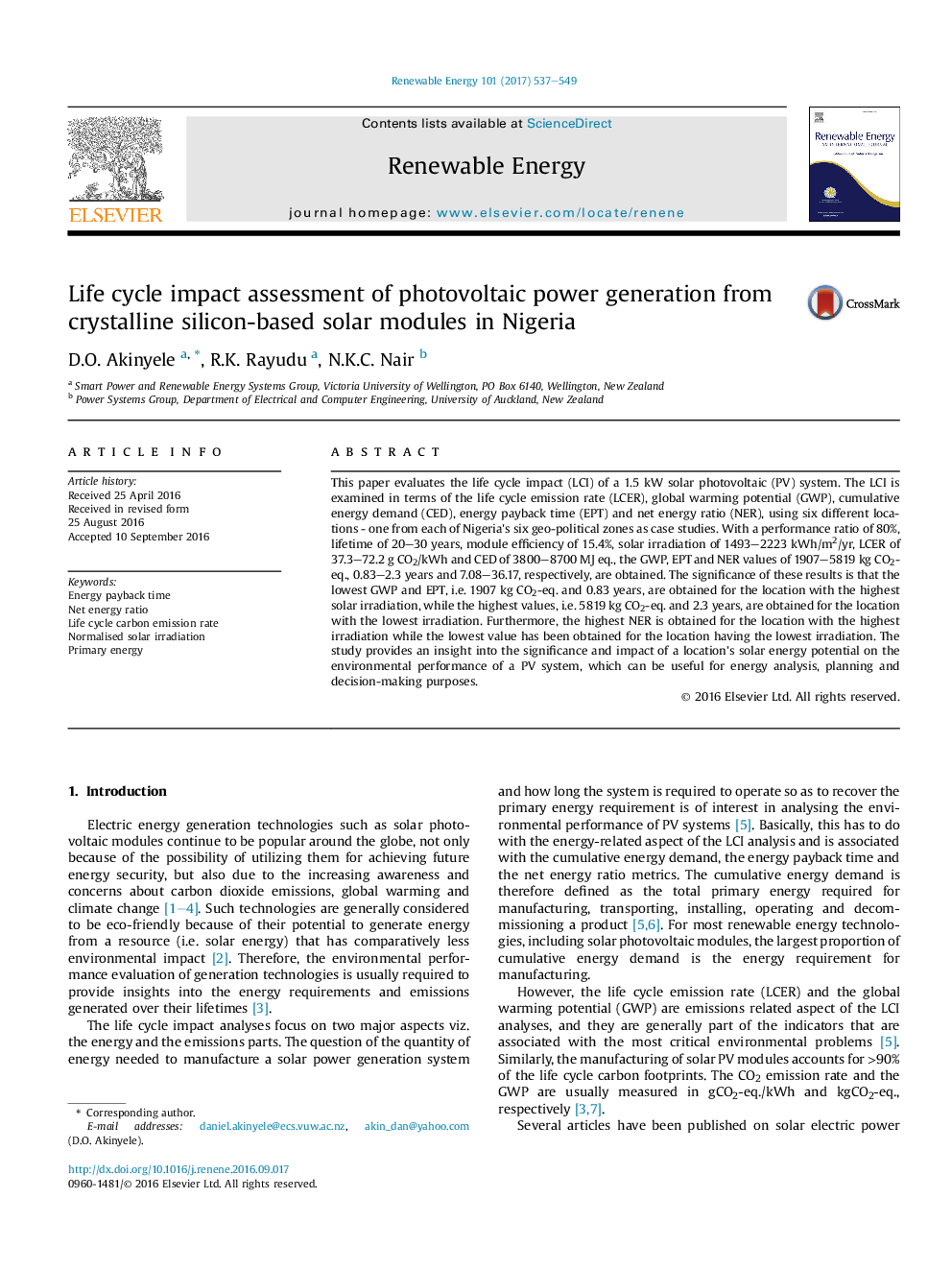| Article ID | Journal | Published Year | Pages | File Type |
|---|---|---|---|---|
| 4926906 | Renewable Energy | 2017 | 13 Pages |
Abstract
This paper evaluates the life cycle impact (LCI) of a 1.5Â kW solar photovoltaic (PV) system. The LCI is examined in terms of the life cycle emission rate (LCER), global warming potential (GWP), cumulative energy demand (CED), energy payback time (EPT) and net energy ratio (NER), using six different locations - one from each of Nigeria's six geo-political zones as case studies. With a performance ratio of 80%, lifetime of 20-30 years, module efficiency of 15.4%, solar irradiation of 1493-2223Â kWh/m2/yr, LCER of 37.3-72.2Â g CO2/kWh and CED of 3800-8700Â MJ eq., the GWP, EPT and NER values of 1907-5819Â kg CO2-eq., 0.83-2.3 years and 7.08-36.17, respectively, are obtained. The significance of these results is that the lowest GWP and EPT, i.e. 1907Â kg CO2-eq. and 0.83 years, are obtained for the location with the highest solar irradiation, while the highest values, i.e. 5819Â kg CO2-eq. and 2.3 years, are obtained for the location with the lowest irradiation. Furthermore, the highest NER is obtained for the location with the highest irradiation while the lowest value has been obtained for the location having the lowest irradiation. The study provides an insight into the significance and impact of a location's solar energy potential on the environmental performance of a PV system, which can be useful for energy analysis, planning and decision-making purposes.
Related Topics
Physical Sciences and Engineering
Energy
Renewable Energy, Sustainability and the Environment
Authors
D.O. Akinyele, R.K. Rayudu, N.K.C. Nair,
